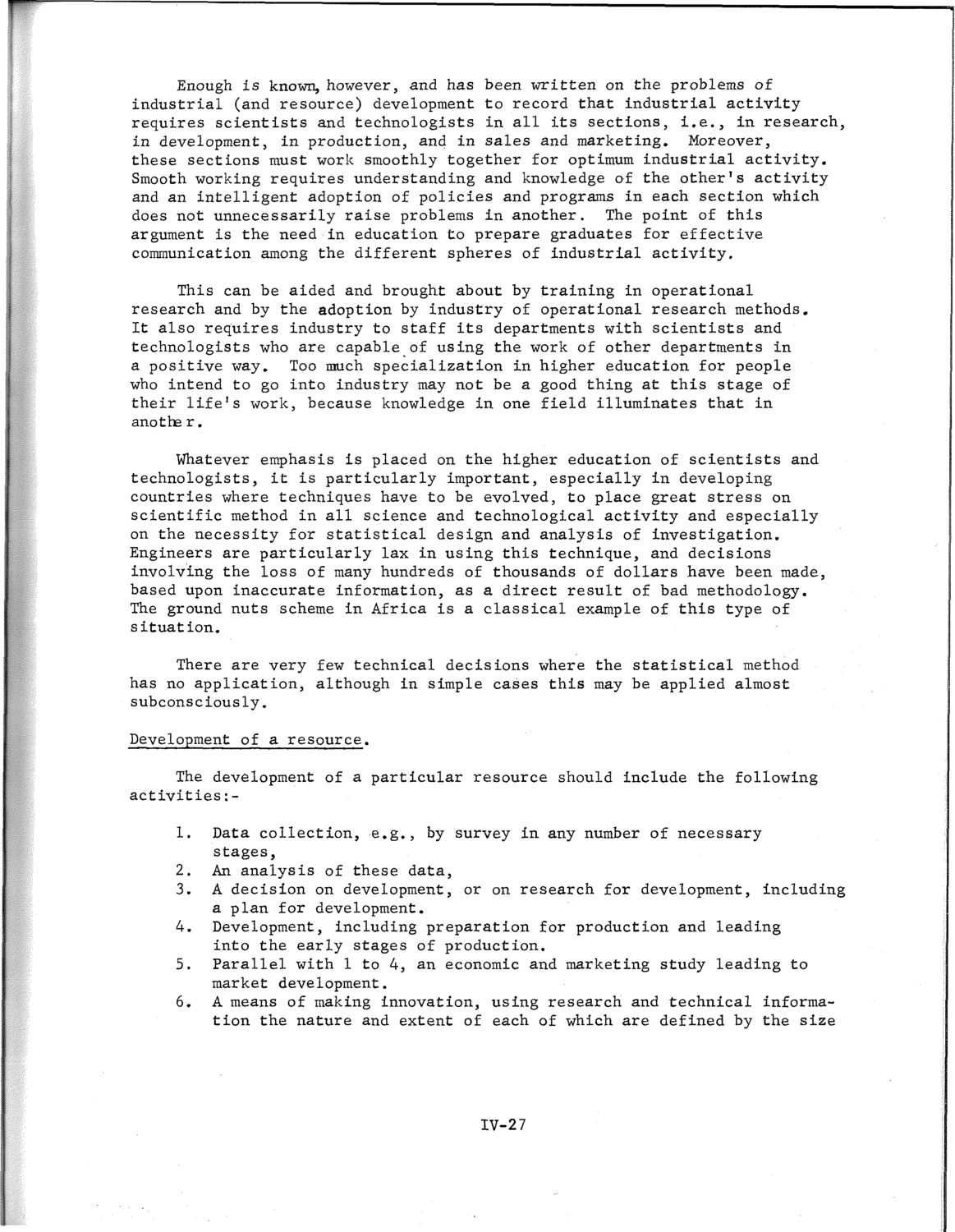| |
| |
Caption: SWE - Proceedings of the First International Conference of Women Engineers and Scientists
This is a reduced-resolution page image for fast online browsing.

EXTRACTED TEXT FROM PAGE:
Enough is known, however, and has been written on the problems of industrial (and resource) development to record that industrial activity requires scientists and technologists in all its sections, i.e., in research, in development, in production, and in sales and marketing. Moreover, these sections must work smoothly together for optimum industrial activity. Smooth working requires understanding and knowledge of the other's activity and an intelligent adoption of policies and programs in each section which does not unnecessarily raise problems in another. The point of this argument is the need in education to prepare graduates for effective communication among the different spheres of industrial activity. This can be aided and brought about by training in operational research and by the adoption by industry of operational research methods. It also requires industry to staff its departments with scientists and technologists who are capable of using the work of other departments in a positive way. Too much specialization in higher education for people who intend to go into industry may not be a good thing at this stage of their life's work, because knowledge in one field illuminates that in anothe r. Whatever emphasis is placed on the higher education of scientists and technologists, it is particularly important, especially in developing countries where techniques have to be evolved, to place great stress on scientific method in all science and technological activity and especially on the necessity for statistical design and analysis of investigation. Engineers are particularly lax in using this technique, and decisions involving the loss of many hundreds of thousands of dollars have been made, based upon inaccurate information, as a direct result of bad methodology. The ground nuts scheme in Africa is a classical example of this type of situation. There are very few technical decisions where the statistical method has no application, although in simple cases this may be applied almost subconsciously. Development of a resource. The development of a particular resource should include the following activities:Data collection, e.g., by survey in any number of necessary stages, 2. An analysis of these data, 3. A decision on development, or on research for development, including a plan for development. 4. Development, including preparation for production and leading into the early stages of production. 5. Parallel with 1 to 4, an economic and marketing study leading to market development. 6. A means of making innovation, using research and technical information the nature and extent of each of which are defined by the size 1. IV-27
| |